Fillets in CNC manufacturing are one of those mysterious design features for which there seem to be no clearly defined rules. Either a part is entirely devoid of fillets, and most or all edges are well-defined, or the part's designer decided to take the opposite route, and every single edge and corner is rounded with some size of fillet radius. Fillets are added to increase strength (by reducing the stress concentration) of the edge of a part or improve the part's look.
This article will explain everything you need to know about what does fillet mean. Also, you' ll learn the details about fillets, like when you need them, and how to decide which to use.
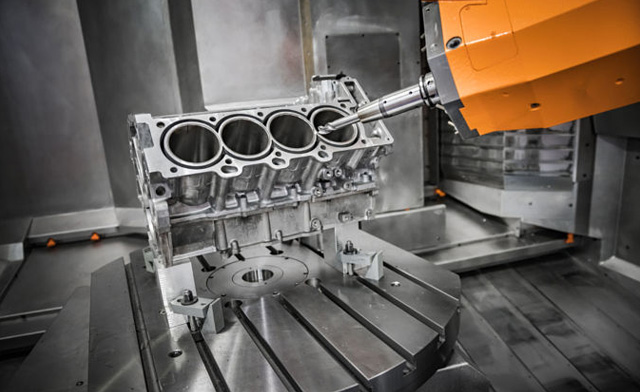
What does fillet define in mechanical engineering? In fact, define fillets as rounded sections of designs found on both the interior and exterior edges. There are three main types of fillets: miter, concave, and convex fillets. On the inside, fillets are concave, while on the outside, they are convex. These fillets are used by engineers to reduce stress on a part. By distributing stress over a larger surface area, fillets help prevent rapid deformation of the stressed part. When a design calls for the elimination of sharp edges and low-stress concentration, fillet engineering is the ideal choice for machinists to employ.
Here are 5 important facts about filleted meaning:
1. In manufacturing, define filleting as intentionally rounding a sharp edge or corner.
2. Fillets are typically created using a CNC fillet edge tool or a similar rounded tool, which results in a convex or concave round shape at the intersection of two surfaces.
3. Define filleted as rounded surfaces, while chamfers are flat surfaces. Both are used at the intersection of two surfaces.
4. Fillets are more effective in relieving stress concentration compared to chamfers.
5. While fillets may slightly increase the cross-sectional surface area, their main advantage is reducing stress concentration in the area where they are applied.
The sections that follow go over instances of how fillets might be used to improve mechanical designs.
Cosmetic Face Edges
In order to achieve a more visually appealing appearance, it is recommended to use CNC filleting on the edges of cosmetic faces when designing a part. This helps to create a seamless blend between the different faces, rather than a harsh transition. However, it is important to note that cosmetic fillets do not enhance the mechanical or strength properties of the part. Therefore, it is advisable to determine the rest of the geometry before adding cosmetic fillets. Additionally, it is important to use these features carefully, as they can increase the cost of the machined assembly.
Improve Handling and Safety
Including fillets in your parts can help prevent injuries caused by sharp edges, especially if the parts are frequently handled and made of metal. Machinists typically break sharp edges as a standard practice, so specifying a filleted radius may not be necessary unless you specifically want perfectly rounded edges or if your parts have ergonomic features that require radiused areas. Fillets are intended to eliminate sharp edges in CNC machined parts and the geometry of the parts can be designed to achieve this as well, ensuring the safety of those who will handle the parts in the future.
According to fillet meaning, you may have had some ideas when it comes to when you need a fillet in manufacturing. This section will examine three scenarios where fillets are necessary for optimal machining of a part.
1. Internal Edges Between Planar Faces
When two vertical walls meet at an angle of less than 180°, it is impossible to cut a filleted corner. In such cases, a fillet is required to be added. This is a common piece of feedback we provide for CNC parts during the Design for Manufacturing (DFM) process. It is important to note that while most CNC tooling is round and symmetric in shape, there are exceptions such as fly cutters in CNC milling and certain tooling in CNC lathes.
2. Internal Edges Between Angled/Organic Surfaces
Edges between angled or organic surfaces with an angle of less than 180° also require fillets. If these edges are not perfectly vertical, they will be cut using a ball endmill, and the radius of that tool determines the smallest fillet size that can be achieved between the surfaces.
3. Vertical Wall + Angled/Curved/Organic Surface
Fillets are necessary when a vertical wall intersects with an angled, curved, or organic surface below it. This scenario may be a bit challenging to grasp, but if you imagine a square or ball endmill cutting alongside a wall, you can visualize that there will always be material remaining between the wall and the surface below unless the latter is perfectly flat and perpendicular to the tool.
Before discussing the optimal use of fillets, it is important to understand situations where fillets may not be beneficial for the overall part design. Adding unnecessary fillets can increase costs without providing any added advantages.
Never Create Filters for 3D-printed Parts.
One such scenario is in the design of parts for 3D printing. Since 3D printing is an additive process where material is added layer by layer, there is no need to consider the movement of a tool to remove material. Therefore, designers have more freedom to incorporate intricate and unconventional geometries. While fillets may be added to relieve stress in areas with sharp geometry changes, they are generally not required. Pockets and internal features in 3D printed parts can have angular or sharp corners, and it is even possible to have fully enclosed cavities within the printed material.
It is also important to consider future manufacturing processes when using 3D printing for prototyping. If there are plans to transition to another process like CNC machining, it is advisable to consider the limitations of that process early on. This can help save both time and money in the long run.
Avoid Designing Bottom Edges with Fillets.
Fillets are design features that can be somewhat perplexing, as there are no clear-cut rules on how to use them. Some parts have no fillets at all, and their edges are well-defined, while others have every single edge and corner rounded with some degree of fillet radius. Fillets are typically added to enhance the strength of a part by reducing stress concentrations or to improve its appearance.
A Note Regarding CNC Machining Fillet
A point to consider when using CNC machining for fillets on a part is that it adds programming and machine time, which leads to increased costs. Fillet edges are commonly used to reduce stress concentration at corners or edges. However, there are alternative methods to reduce the cost of fillet manufacturing. For example, parts can be fillet welded to create lap, corner, and T joints, where weld metal is used to secure the joints and create a fillet weld at the corners.
There are also optional uses for fillets that can optimize mechanical designs. One such use is for cosmetic face edges. When designing a part with cosmetic faces, CNC filleting the edges can create a seamless blend between the faces, improving the appearance of the part. It's important to note that cosmetic fillets do not enhance mechanical or strength properties, so they should be added after the rest of the geometry is determined. However, these features should be used cautiously as they can increase the cost of the machined assembly.
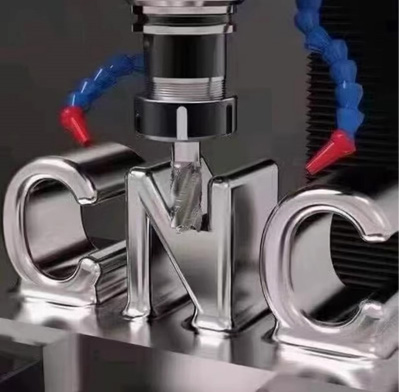
You should be aware of the distinctions between the fillets definition and the chamfer definition. However, we'll clarify the differences between fillet and chamfer as below for a better understanding.
Fillet:
1. Machining cost: Fillets are more expensive to machine compared to chamfers.
2. Machining time: Creating curved edges for fillets requires more time and patience, making it a longer process compared to chamfers.
3. Cutting tools: Specialized cutting tools are needed to create fillets due to the different radius required. The desired radius determines the type of cutting tools to be used.
4. Stress concentration: Fillets distribute stress over a larger radius, protecting the part from deformation. This makes them suitable for exterior parts.
5. Safety: Fillets improve the safety of handling the material.
Chamfers:
1. Machining cost: Chamfers are cheaper to machine compared to fillets.
2. Machining time: Chamfers can be created faster than fillets.
3. Cutting tools: One cutting tool can be used to create different chamfer sizes, eliminating the need for multiple tools.
4. Stress concentration: Chamfers can cause stress to concentrate on a specific part, leading to easier material deformation.
5. Safety: The sharp edges of a chamfer can pose a risk of injury.
When faced with the decision of whether to use chamfer vs fillet in a design, machinists may feel unsure about which option to choose. To help make this decision easier, here are some factors to consider.
1. Machining Time
A chamfer may be the better choice if you need to complete the design quickly and manually. It requires less time compared to a fillet. However, if you are using CNC machining, there won't be a significant time difference between the two, except for the time needed to change tools.
2. Cost
If you have a limited budget for your design, a chamfer is more cost-efficient than a fillet.
3. Attractiveness
A fillet is the way to go if you are looking for a more visually appealing design. Industrial designers often prefer fillets over chamfers because they enhance the attractiveness of the design.
4. Rust Prevention
Fillet parts tend to prevent accelerated rusting better than chamfers. This is because fillets allow for the even distribution of coatings, such as paint, which can protect the parts from rust. Fillets also allow for thicker coatings to adhere to the surface. In contrast, parts with chamfers may be more prone to rust without sufficient coatings.
5. Stress Distribution
If you want the stress in your design to be evenly distributed along the edges, a fillet is the better choice. Fillets share the stress across a larger surface area compared to chamfers.
6. Hole Functionality
The purpose of the hole in your design can help determine whether a fillet or chamfer is more suitable. A chamfer is a more appropriate option if the hole is meant for pin insertion or to accommodate screws and bolts.
By considering these factors, you can make a more informed decision when choosing between a fillet and a chamfer for your design.
Understanding filleted definitions should not be confusing. Choosing a fillet for a design is crucial as it can enhance efficiency, save costs, and increase lifespan. With extensive expertise in design engineering and part manufacture, Richconn can provide a design that excels in the manufacturing stage. In case there is an existing design, Richconn also offers professional tips and suggestions for further improvement. Cutting and milling your design is made easy with their 3, 4, and 5-axis milling options for CNC machining projects, ensuring successful outcomes. Additionally, they provide quality inspection and material certifications to guarantee the excellence of the parts. All of these services are offered at competitive industry prices.
Now that you better understand what is fillet, you can apply this knowledge to design your next intricate part. Richconn has a reliable CNC machining service. We have a staff of highly skilled engineers and machinists who can complete your items correctly the first time. If you need assistance with specifying a fillet or selecting the appropriate size, Richconn engineers can help you optimize the design of your CNC machined components, regardless of their complexity.
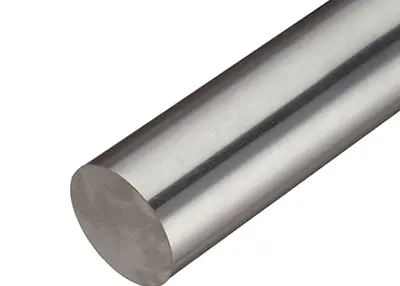 Machined Bar: Your Ultimate Guide to Precision EngineeringNovember 7, 2023Welcome to Richconn's comprehensive guide on "Machined Bar." Whether you're an engineer seeking in-depth knowledge, a manufacturer exploring material options, or a student in the quest for information, this guide has you covered. In the world of CNC machining, machined bars are essential components. They offer precision, strength, and versatility, making them invaluable in various industries.view
Machined Bar: Your Ultimate Guide to Precision EngineeringNovember 7, 2023Welcome to Richconn's comprehensive guide on "Machined Bar." Whether you're an engineer seeking in-depth knowledge, a manufacturer exploring material options, or a student in the quest for information, this guide has you covered. In the world of CNC machining, machined bars are essential components. They offer precision, strength, and versatility, making them invaluable in various industries.view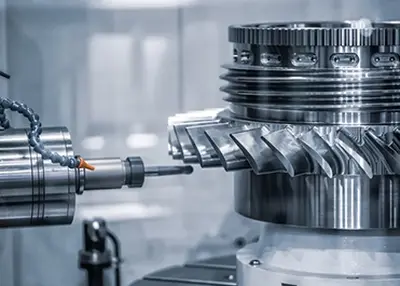 Machining Commonly Used 24 Kinds of MaterialsOctober 23, 2023Can be used for CNC machining, mold processing of more than a hundred kinds of materials, metal, plastic, but according to the actual needs of different, each material use as well as the demand varies, the most commonly used 24 kinds of materials.view
Machining Commonly Used 24 Kinds of MaterialsOctober 23, 2023Can be used for CNC machining, mold processing of more than a hundred kinds of materials, metal, plastic, but according to the actual needs of different, each material use as well as the demand varies, the most commonly used 24 kinds of materials.view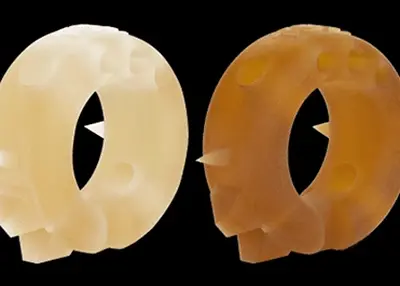 Choosing a Heat Resistant PlasticOctober 17, 2023If you've ever left a food container in the microwave for too long, you know that some plastics don't tolerate high temperatures very well. Depending on the type of container, you might be storing the food from the night before in polypropylene (PP), polycarbonate (PC) or polyethylene (PE), none of which excel at heat resistance.view
Choosing a Heat Resistant PlasticOctober 17, 2023If you've ever left a food container in the microwave for too long, you know that some plastics don't tolerate high temperatures very well. Depending on the type of container, you might be storing the food from the night before in polypropylene (PP), polycarbonate (PC) or polyethylene (PE), none of which excel at heat resistance.view The Complete Guide to CNC Machining ServiceMay 31, 2024What is CNC machining service? What are advantages of CNC Machining Service? How to find a reliable CNC Machining Service? Let’s find the answers with the help of this article!view
The Complete Guide to CNC Machining ServiceMay 31, 2024What is CNC machining service? What are advantages of CNC Machining Service? How to find a reliable CNC Machining Service? Let’s find the answers with the help of this article!view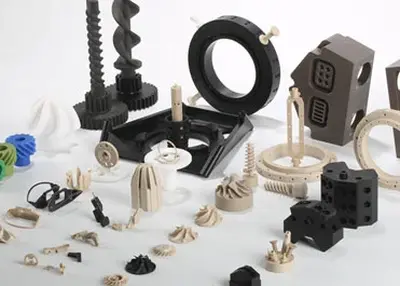 How Much Does Injection Molding Cost?August 9, 2023Injection molding is a widely used manufacturing process for the production of components and products. As with any manufacturing process, it is crucial to understand the cost factors involved in inje...view
How Much Does Injection Molding Cost?August 9, 2023Injection molding is a widely used manufacturing process for the production of components and products. As with any manufacturing process, it is crucial to understand the cost factors involved in inje...view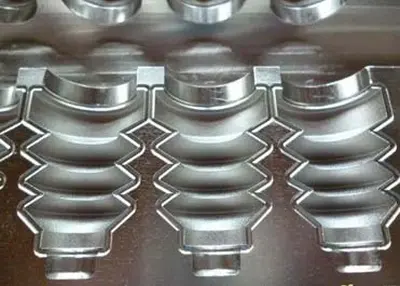 Must-Read for Procurement Professionals! 2023 Report on China's Rubber Molds and Parts IndustryAugust 16, 2023Overview: This report provides an in-depth analysis of the development trends, competitive landscape, and key characteristics of China's rubber molds and parts industry in 2023. It serves as an im...view
Must-Read for Procurement Professionals! 2023 Report on China's Rubber Molds and Parts IndustryAugust 16, 2023Overview: This report provides an in-depth analysis of the development trends, competitive landscape, and key characteristics of China's rubber molds and parts industry in 2023. It serves as an im...view